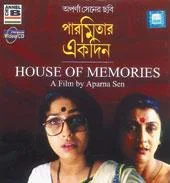Maha Mrityunjaya Mantra -
- from Rig Veda 7.59.12 (1500-1200 BCE)
https://greenmesg.org/stotras/shiva/mahamrityunjaya_mantra.php
Om Try-Ambakam Yajaamahe
Sugandhim Pusstti-VardhanamUrvaarukam-Iva Bandhanaan
Mrtyor-Mukssiiya Maa-[A]mrtaat ||
Meaning:
1: Om, We Worship the Tryambaka (the Three-Eyed One),
2: Who is Fragrant (as the Spiritual Essence), Increasing the Nourishment (of our Spiritual Core);
3: From these many Bondages (of Samsara) similar to Cucumbers (tied to their Creepers),
4: May I be Liberated from Death (Attachment to Perishable Things), So that I am not separated from the perception of Immortality (Immortal Essence pervading everywhere).
http://mk.skycoded.com/watch/DIrvM1gcnPU#
 |
| Squirting of cucumber seeds Ecballium elaterium |
Now there is guy, Praveen Mohan who has delved into the secrets of lost temples and many of the forgotten pearls of wisdom in Hinduism. He is quite prolific in making videos. Some of his claims are quite outlandish and got chaffed by content providers. Youtube and Facebook, at one time, even temporarily suspended his account. Nevertheless, they are food for thought and totally worth considering. He brings out mostly the marvel of ancient Indian builders, their building techniques which were way ahead of their times and how these technologies predate modern Western knowhow but somehow got forgotten in the annals of time.
In one of his presentation, he ventures into the Maha Mrityunjaya Mantra. It is one of the oldest mantras, taken from the Rigveda which was composed as way back as between 1500-1200 BCE. Of course, it is paying homage to Lord Siva but it does not request to save us from death or danger. The way I look at it, it is making us realise that life and death is a continuum, an essence of the soul. Now, what is the 'cucumber' (Urvaarukam) doing in all these, of life and preservation of life?
 Here is where it becomes profound. Uruvarukkam is a poisonous variety of cucumber that explodes when ripe to extrude its seeds of life. This, in a way, can be viewed as immortality as one transmits his elixir of life, the DNA, to the next generation. His body dies but his legacy lives on forever.
Here is where it becomes profound. Uruvarukkam is a poisonous variety of cucumber that explodes when ripe to extrude its seeds of life. This, in a way, can be viewed as immortality as one transmits his elixir of life, the DNA, to the next generation. His body dies but his legacy lives on forever.There are other things related to this mantra. The pattern of seed distribution and the placing of the seeds in the fruit suggests that the ancient Hindu scholar knew about Fibonacci numbers (which was actually thought of by a 2nd century Sanskrit scholar, Pingala). Fibonacci sequencing in nature ensures the best placement of leaves of the trees for sunlight and seeds on a flower for best dispersion.
 |
| Fig 1 ratio of the length of the longer segment to the shorter one is φ |
The diameter of the Sun is 108 times the diameter of Earth. The distance from the Sun to Earth is 108 times the diameter of the Sun. The distance from the Earth to Moon is 108 times the diameter of the moon. In ayurvedic practice, it is said that there are 108 vital points in our body.
 |
| Fig 2 |
In certain prayers involving Lord Shiva, elements of nature are invoked and are represented in the form of a pentagram. Even though the Western world dismisses this as invoking of satanic worship, there is much involved in it. Again, the outer angle of the pointed star is 108.
As seen in the diagram in Fig 1 and Fig 2, the ratio between intersections of shorter and longer lines corresponds to the golden ratio, φ, of 1.618. The golden ratio, in turn, is seen everywhere in Nature. The ratio between subsequent numbers in the Fibonacci sequence is also φ. The pentagram, hence, is the visual representation of life much like how Fibonacci numbers represent the pattern of sustaining life.
So, in short, the take-home message, at least me, in all these prayers is not to change the course of Nature but instead endeavour to use our intelligence to fight the offending agents whilst appreciating that death is not the be end. Life continues with or without us.


























